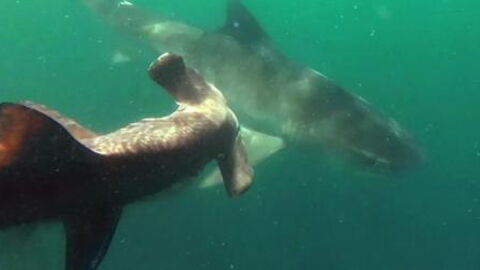Whilst sharks are feared the world over, many breeds of shark are actually pretty harmless. Many feed only on tiny fish like plankton and krill and a lot of sharks are even smaller than humans themselves. Even the most dangerous breeds only rarely attack humans. However, that doesn’t stop them being freaky… here’s our list of four of the scariest types of shark on earth.
Discover our latest podcast
The biggest shark
The biggest type of shark in the world is the whale shark, which can reach up to 18.8 metres in length. They typically weigh as much as 19,000 kilos. However, these guys are actually gentle giants – as they feed on plankton and have been known to play with divers and even give them a ride on their backs!
The most deadly shark
No surprises here, the most deadly shark in the ocean is the great white. The breed famously depicted in Stephen Spielberg’s Jaws, great white sharks are responsible for the most attacks on humans each year. There have been at least 314 unprovoked attacks on humans by great whites since the 1950s. The tiger shark and the bull shark are the next most deadly.
The weirdest-looking shark
There’s a fair amount of competition for this title – seeing as there are plenty of weird-looking sharks out there. These include the frilled shark, which has 300 teeth which each have three points and looks a bit like Flotsam and Jetsam from The Little Mermaid and the cookiecutter shark, which has one of the weirdest mouths we’ve ever seen (check out the video above to see for yourself!). But the weirdest-looking shark of all has to be the goblin shark, which has a sort of horn on top of its head and catapulting jaws!
The all-but immortal shark
OK, so it’s not actually immortal, but the Greenland shark, which lives in the Arctic, can live up to 500 years old. That means there could be Greenland sharks swimming around right now who were also around in the time of Henry VIII. Greenland sharks this old can often have a creepy appearance as their eyes become ghostly and their skin can be covered in parasitic worms.















